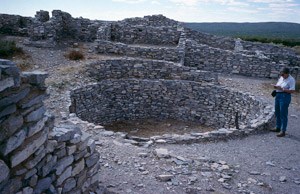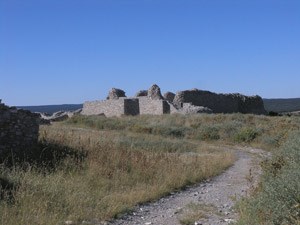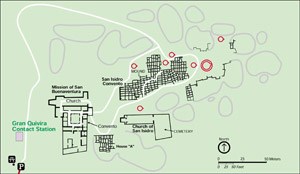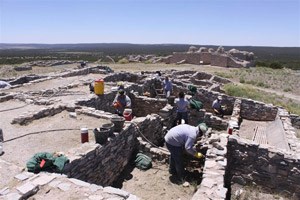
Gran Quivira (San Buenaventura de las Humanas and San Isidro)
Salinas Pueblo Missions National Monument Mountainair, New Mexico
Coordinates: 34.596385, -106.295893
#TravelSpanishMissions
Discover Our Shared Heritage
Spanish Colonial Missions of the Southwest Travel Itinerary

Photo by HJPD, 1998. Courtesy of Wikimedia commons.

Photo by Patrick Gibbons, 2010. Courtesy of Flickr Commons.

Courtesy of the National Park Service.

Courtesy of the National Park Service.
Plan Your Visit
Salinas Pueblo Missions National Monument is a unit of the National Park System. The Main Visitor Center is located at 102 S. Ripley in Mountainair, NM. The visitor center is open daily, except on Thanksgiving, Christmas, and New Year’s Day. The Monument's summer hours are from 9:00 am to 6:00pm, and during the winter, the site operates from 9:00am to 5:00pm. Admission is free. For more information, visit the National Park Service Salinas Pueblo Missions National Monument website or call 505-847-2585.
Many components of Salinas Pueblo Missions National Monument have been documented by the National Park Service’s Historic American Buildings Survey, including Church of San Isidro, Church of San Buenaventura. Salinas Pueblo Missions National Monument is also featured in the National Park Service American Southwest Travel Itinerary, the System and in the American Latino Heritage Travel Itinerary. Gran Quivira is the subject of an online lesson plan Gran Quivira: A Blending of Cultures produced by the National Park Service Teaching with Historic Places program.
Last updated: April 15, 2016
